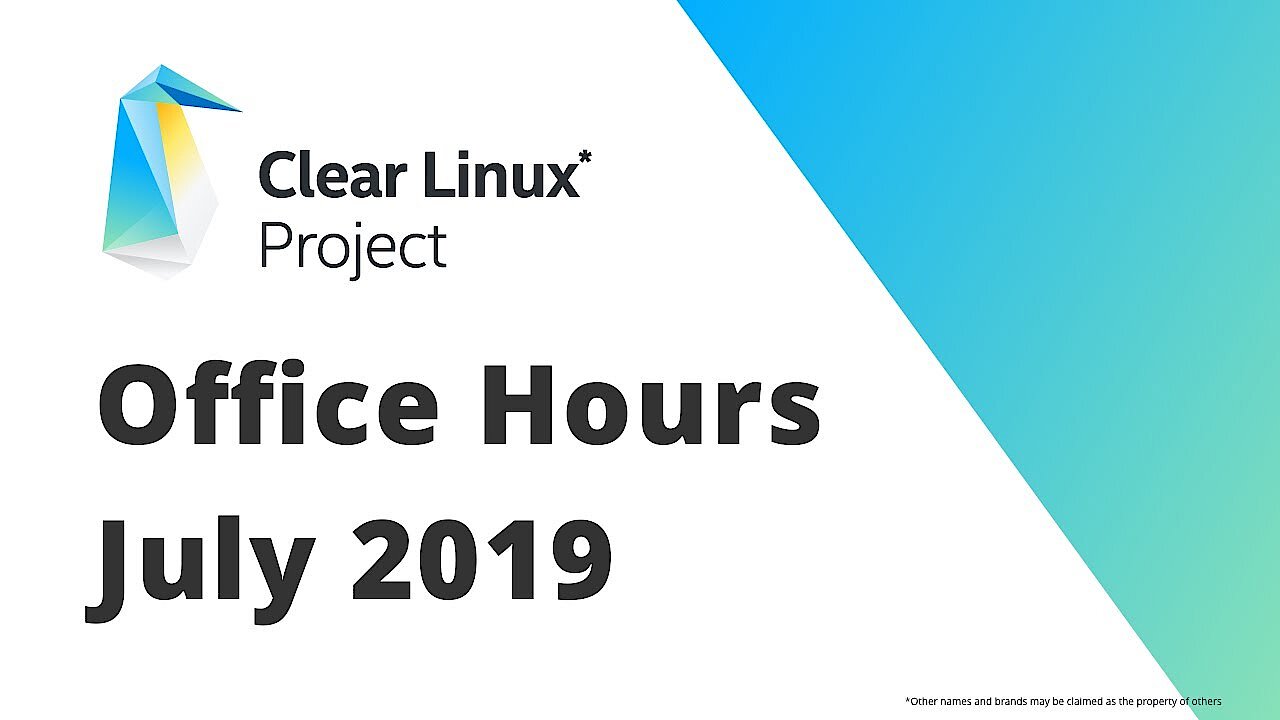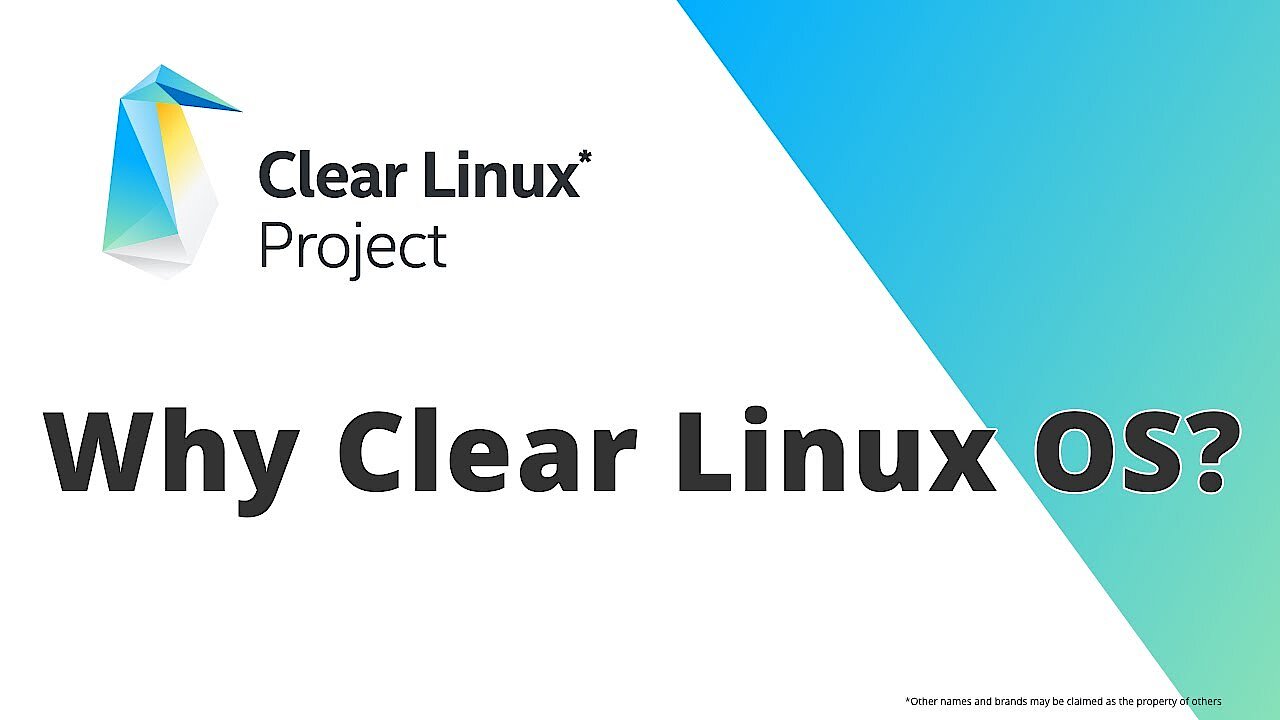Clear Linux OS
The American semiconductor manufacturer Intel holds around 80% of the global market share in computer microprocessors and also produces various types of computer microchips. The Clear Linux operating system, Intel’s flagship project, is optimised for this hardware. Intel first introduced this new Linux distribution at the OpenStack Summit in 2015. As part of the Linux family, Clear Linux OS is also an open source operating system. What sets it apart is that it has been specially designed for use with the cloud. However, the operating system now also offers an impressive desktop environment. This article provides a more detailed introduction to Clear Linux and its features.
What is Clear Linux?
With the Clear Linux Project, the chip manufacturer Intel has launched an operating system that is lightweight, performant and secure. The Clear Linux cloud operating system has been optimised for use with Intel’s own processors and boasts particularly high performance when used with its hardware. This holds true for the entire stack: the platform, kernel, math libraries, frameworks, and runtime.
Clear Linux is a stateless system. User and system data are strictly separated. This makes it easier to install, configure, and update the data. One particularly important feature of the operating system is its flexibility. If needed, you can switch the installation to a standard file system so that it works like a traditional operating system.
In a stateless system, the standard configuration of bundles and system components can be found in the /usr directory. These are strictly separated from the configuration data in the /etc directory.
Another special feature of Clear Linux is that it has its own container format called ‘Clear Container’ which is based on Rocket and Docker. This format was developed around Intel Virtualisation Technology and comes with its own security concept with isolation levels. Due to its increased isolation, it offers a level of security similar to that of a virtual machine. Clear Linux OS also offers the typical performance of a Linux container that boots up in a matter of minutes. If security is particularly important to you, we recommend checking out our article on Security-Enhanced Linux (SELinux).
Despite its numerous advantages and virtually unbeatable performance, not many users are familiar with Clear Linux, as is also the case with the basic Linux operating system.
You can rent a root server from IONOS at a reasonable price and benefit from useful features such as updates, SSL encryption, management software, and a wide selection of different Windows and Linux distributions.
Desktop use of Clear Linux OS
Initially, Clear Linux OS was limited to cloud usage and only received further optimisation in security and performance. The operating system can now be used on desktops and boasts good usability and an attractive desktop environment. Clear Linux features a customised version of GNOME, similar to Ubuntu 20.04. You can also customise the standard desktop.
GNOME is a desktop environment that includes a graphical user interface and commonly used programs. It is also the standard desktop for Fedora and Ubuntu.
High security and performance are present when using the desktop version which also offers attractive packages and window management based on GNOME. However, in the future, Intel will once again be focusing on cloud and server optimisation and is reducing the amount of customisation that can be done to the interface. That said, the fully functional desktop will continue to exist thanks to a generic GNOME implementation.
Clear Linux features
As previously mentioned, Clear Linux OS is characterised by its high performance and lean yet secure container format. However, the operating system offers even more features:
- Kernel Direct Access (DAX): By using the kernel function, Intel minimises memory consumption for each container. The system does not load files into the memory but instead bypasses the page cache and performs read and write operations directly in the non-volatile memory.
- Function multi-versioning compiler option: This feature ensures higher speeds for applications that are not optimised for multiple command sets.
- Mixer tool: This tool allows Intel to create customised versions of Clear Linux OS. The official Clear Linux team also uses this software to produce updates and releases. As a result, you can use different server functions of Clear Linux and of other distributions. The prices vary based on the level of customisation.
- Telemetry function: Using this function, Clear Linux automatically collects data about Common Vulnerabilities and Exposures (CVEs). Any personal information and findings about you as a user are not recorded. This function enables developers to identify security problems right away, even before they can affect users. It is an optional function and can be disabled.
Clear Linux and additional Linux distributions
There is a wide range of different Linux distributions available based on the Linux kernel that are perfectly adapted to a variety of requirements. Linux has been run as an open source project from the very beginning, so the source code for the kernel is freely available to all developers.
The kernel is the core of the operating system on which all software components are built.
Clear Linux is not a general purpose distribution since it is primarily designed for the cloud. There are also other distributions that are designed for cloud computing, such as Ubuntu, CentOS, and Oracle Linux. However, Clear Linux is primarily geared towards developers and other IT professionals.
Most Linux distributions manage and update data via a package system. Clear Linux OS also uses the popular RPM format for binary packages. However, Clear Linux groups packages in bundles for specific purposes that are updated together. This approach falls somewhere between traditional package management and atomic updates. As a result, each automatic update creates a new version of the operating system. This process also involves the recently developed package manager swupd which is used for versioning at the file level.
This brings us to the next difference between Clear Linux and other distributions. Each version and component of Clear Linux OS has a unique version number. The system only downloads the components that are actually required. This means that Clear Linux also performs better than other Linux distributions when updating the system. Additionally, the detailed version identification for all packages and bundles makes it possible for system administrators to accurately document and correct security fixes and tests.
In the following video titled ‘Why Clear Linux’, the manufacturer summarises what makes this performant operating system stand out from the rest:
Advantages and disadvantages of Clear Linux OS
We have already gone over the unique features and advantages of Clear Linux in detail: security, performance, and customisation. Below are some of the advantages of the operating system:
- Fast updates: Clear Linux OS updates quite quickly and easily. Delta updates are proportional to the modification that was made. Operating system dependencies are resolved during the update.
- Rolling release: Intel constantly updates Clear Linux and makes the latest version available for download on its website.
- Downloads: Clear Linux is an open source software and thus can be downloaded free of charge. Intel also offers additional software for the operating system for download on its store.
- Security: Through its mix of Clear Containers and the telemetry function, Clear Linux offers excellent security.
Its disadvantages include:
- Neglects desktop usage: While Intel does provide a generic GNOME implementation, it is no longer optimised.
- Optimisation for Linux: Clear Linux is especially performant on Intel hardware. Some have criticised its customised design stating that it is significantly worse when used with other hardware. However, these criticisms do not hold much water now that a variety of tests have been conducted which show that Clear Linux performs significantly better than Ubuntu and Fedora on other devices.
- Chrome updates: In Clear Linux OS, this is not done automatically, as is the case with Ubuntu for example.



